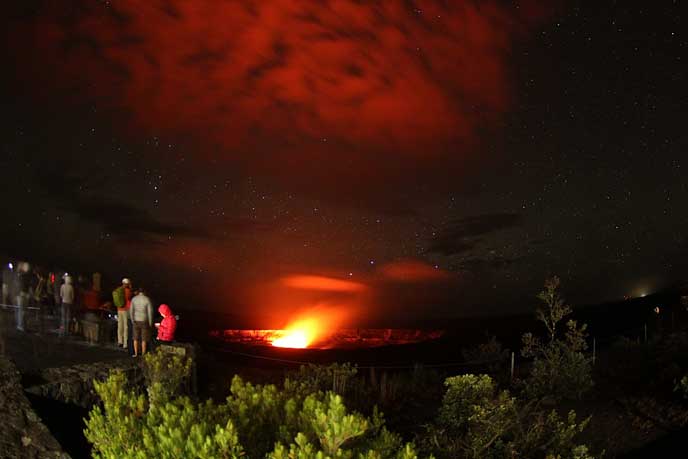|
You are viewing ARCHIVED content published online before January 20, 2025.
Please note that this content is NOT UPDATED, and links may not work. For current information,
visit https://www.nps.gov/aboutus/news/index.htm.

Alex Werjefelt
Contact: Jessica Ferracane/Public Affairs Specialist, 808-985-6018 Hawaii National Park, HI – Hawai'i Volcanoes National Park will incrementally increase entrance and camping fees over the next three years in order to fund deferred maintenance and improvement projects within the park, and to meet national standards for parks with similar visitor amenities. Entrance fees for recreational use have not increased since 1997. Beginning June 1, Hawai'i Volcanoes National Park will increase its per-vehicle entrance fee in $5 increments from the current price of $10 per vehicle to $15 per-vehicle this year, $20 in 2016, and $25 in 2017. The vehicle pass is valid for seven days. The per-person entrance fee (the rate bicyclists and pedestrians pay) will increase from the current rate of $5 to $8 on June 1, $10 in 2016, and to $12 in 2017. The motorcycle fee will go up from $5 to $10 on June 1, $15 in 2016, and to $20 in 2017. One significant modification to the new fee structure was based on public input. The annual Tri-Park Pass, considered by many as the kama'āina, or residents pass, will remain at the current rate of $25 for 2015 and 2016, and will increase to $30 in 2017. Based on public input, the park proposed a $30 fee for the Tri-Park Pass, instead of the national standard of $50. The annual Tri-Park Pass is available to all visitors and allows unlimited entry for one year to three national parks: Hawai'i Volcanoes National Park, Pu'uhonua o Hōnaunau National Historical Park, and Haleakalā National Park. New fees are also slated for all backcountry and front-country campsites, including Kulanaokuaiki Campground, and will be $10 per site per night. Backcountry campsites will have a stay limit of three consecutive nights, while the front-country campsites will have a stay limit of seven consecutive nights. Currently, camping is free, except at Nāmakanipaio Campground, which is managed by Hawai'i Volcanoes Lodge Company, LLC. The new camping permit fees are similar to other public camping fees statewide. In addition, entrance fees will increase for commercial tour companies. Currently, road-based tour vans carrying one to six passengers pay a $25 base fee and $5 per person to enter the park. The commercial per-person entrance rates will increase to $8 in 2015; $10 in 2016; and $12 in 2017 and will remain at $12 through 2021. The base fee will not change. Non-road-based tour companies, i.e. hiking tour companies that are on trails more than they are touring the park by vehicle, don't pay a base rate but their per-person entrance fees would increase under the proposed schedule. "The increases over the next few years will enable us to continue to provide a safe and enjoyable experience for all visitors, while upgrading some basic services like our campgrounds," said Park Superintendent Cindy Orlando. "We reached out to our community for their feedback on the new fees, and many comments were supportive of the increase as long as the Tri-Park Pass continued to be offered," she said. Recreational entrance fees are not charged to persons under 16 years old, or holders of the Tri-Park, America the Beautiful National Parks and Federal Recreational Senior, Access, or Military passes. These passes may be obtained at the park, or online. The current National Park Service (NPS) fee program began in 1997 and allows parks to retain 80 percent of monies collected. Projects funded by entrance fees at Hawai'i Volcanoes National Park include ongoing trail maintenance, cabin repairs, hike pamphlets, restrooms, picnic tables, and more. The transformation of the 1932 Administration Building ('Ōhi'a Wing) into a cultural museum that visitors will soon enjoy is also a fee-funded project. Entrance fees also protect the Hawaiian ecosystem by funding fencing projects that prevent non-native ungulates like pigs and goats from devouring rare native plants. An NPS report shows that 1,693,005 visitors to Hawai'i Volcanoes National Park in 2014 spent $136,838,700 in communities near the park. That spending supported 1,672 jobs on island, and had a cumulative benefit to the local community of $170,878,000. -NPS- |
Last updated: May 20, 2015
